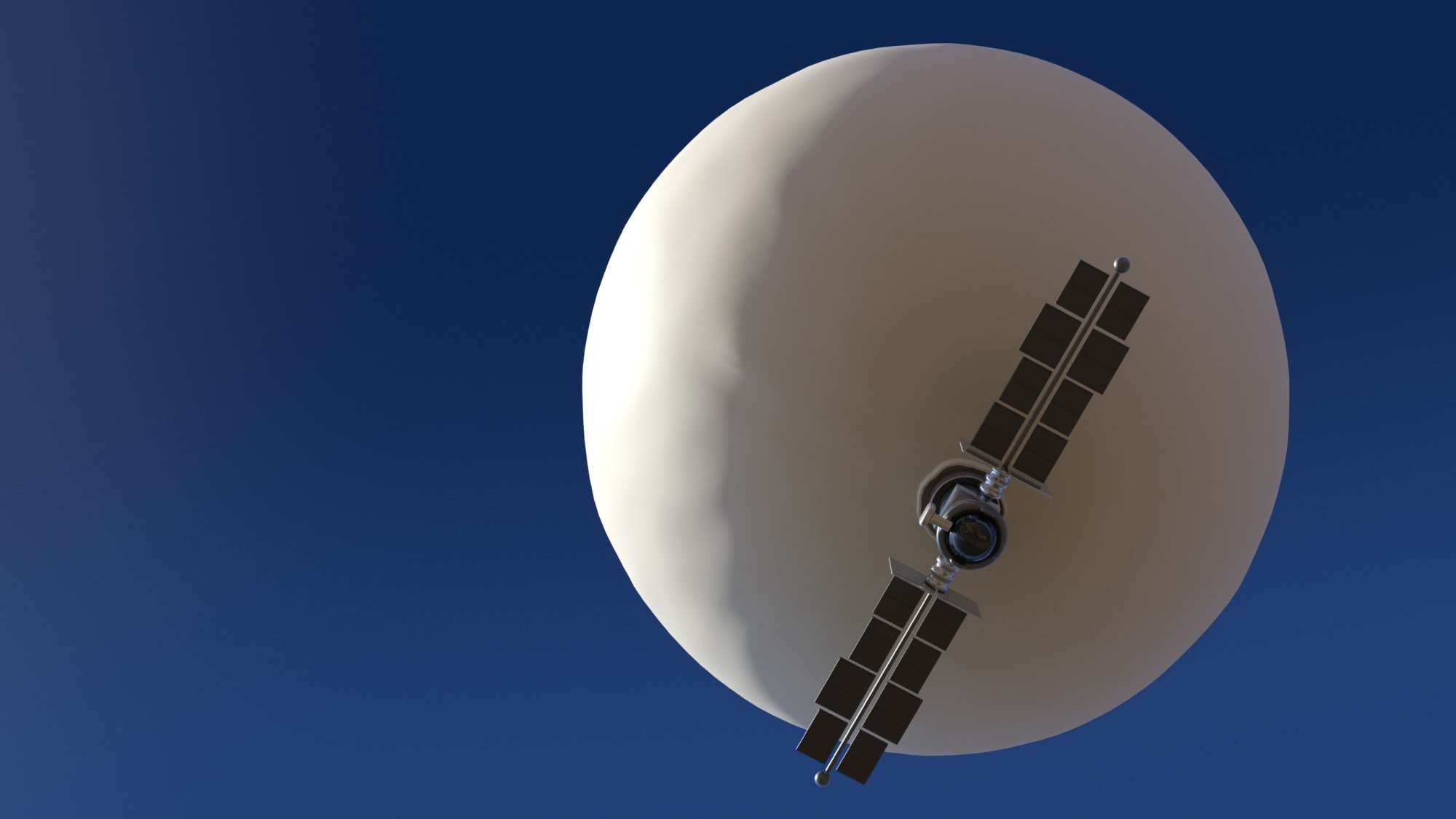A recent article in the Journal of Polymer Science presents a multilayer film made of polyethylene (PE) and ethylene vinyl alcohol (EVOH). The structure places PE on the outer layers and EVOH on the inner layer.
The film is designed for use in pressurized stratospheric balloons, with an emphasis on improved helium permeability. The study also investigates how each material contributes to the molecular mobility of the multilayer system.

Image Credit: Broadcast Media/Shutterstock.com
Background
Linear low-density polyethylene (LLDPE) is commonly used in the envelopes of zero-pressure balloons. It is lightweight, cost-effective, transparent, and has favorable mechanical properties. However, it performs poorly as a helium barrier.
EVOH offers better gas barrier properties than PE, including lower helium and oxygen permeability. It is frequently used in packaging for this reason. However, EVOH absorbs moisture easily due to its polar alcohol groups, which can weaken its mechanical performance.
To balance these characteristics, multilayer films with a PE/EVOH/PE structure are often used. PE protects EVOH from moisture, while EVOH reduces gas permeability. This study explores how this structure affects helium permeability in LLDPE/EVOH/LLDPE multilayer films.
Methods
The study used commercial LLDPE and two multilayer LLDPE/EVOH/LLDPE films. Both multilayers had the same EVOH layer thickness, but differed in the thickness of the outer LLDPE layers. The film with thicker LLDPE layers was labeled PE/EVOH/PE-A, while the thinner one was labeled PE/EVOH/PE-B.
EVOH films were also synthesized by melting poly(vinyl alcohol-co-ethylene) pellets. In addition, poly(vinyl alcohol) (PVA) films were prepared from aqueous dispersions.
The LLDPE and commercial multilayers shared the same manufacturer, thermomechanical history, and chemical composition (except for the presence of EVOH), making them suitable for direct comparison. The synthesized PVA and EVOH films were studied to better understand the multilayer behavior.
Helium permeability was measured for all films. Differential scanning calorimetry (DSC) was conducted from 25 to 250 °C. Dynamic mechanical analysis (DMA) was performed for different films over the temperature ranges of −140 to 80 °C (PE/EVOH/PE and LLDPE), −140 to 100 °C (EVOH), and −140 to 110 °C (PVA). Dynamic dielectric spectroscopy (DDS) was also carried out across similar temperature ranges.
Results and Discussion
LLDPE showed higher helium permeability than a polyester-based multilayer film (PBMF). The addition of EVOH to create the multilayer reduced permeability by a factor of four. The helium permeance of the PE/EVOH/PE films was about 1.5 times higher than that of PBMF, but still significantly lower than pure LLDPE. PE/EVOH/PE-B had slightly lower permeance than PE/EVOH/PE-A, despite being thinner.
The multilayer films had improved tensile properties across all temperature ranges when compared to pure LLDPE. This improvement was attributed to the inclusion of EVOH. However, the storage modulus of PE/EVOH/PE-A and PE/EVOH/PE-B was similar, likely due to the small proportion of EVOH in the multilayer.
EVOH alone had a much higher storage modulus than LLDPE. This is due to the strong intra- and intermolecular interactions in its PVA segments. The PVA film had an even higher storage modulus than EVOH.
DMA and DDS provided insight into molecular mobility within the films. A γ relaxation mode was observed around −120 °C, linked to crankshaft motion in the LLDPE layers. A double β relaxation component was also observed. One part was due to movement in the alcohol and PVA segments of EVOH. The other reflected the mobility of the amorphous regions between crystalline lamellae in the LLDPE layers.
At higher temperatures, the films displayed an αc relaxation mode, associated with the amorphous regions near LLDPE crystallites. A viscoelastic transition related to EVOH (α relaxation) was also detected. The results showed that molecular mobility varied depending on the type of stimulus—thermal, mechanical, or dielectric.
Download your PDF copy now!
Conclusion
This study evaluated the gas barrier and mechanical properties of PE/EVOH/PE multilayer films. The roles of each layer and polymer in molecular mobility were examined through a range of characterization methods.
The inclusion of EVOH improved the mechanical performance of the multilayer compared to pure PE. EVOH also reduced helium permeability significantly without affecting crystallinity. These findings suggest that PE/EVOH/PE multilayer films may be suitable for the envelopes of long-duration pressurized stratospheric balloons.
Journal Reference
Dintilhac, N., Lewandowski, S., Gevaux, L., Dantras, E. (2025). Dielectric and Mechanical Relaxations Contribution to the Microstructure Understanding of PE/EVOH/PE Multilayer Thin Films for Stratospheric Balloons Applications. Journal of Polymer Science. DOI: 10.1002/pol.20250296, https://onlinelibrary.wiley.com/doi/10.1002/pol.20250296
Disclaimer: The views expressed here are those of the author expressed in their private capacity and do not necessarily represent the views of AZoM.com Limited T/A AZoNetwork the owner and operator of this website. This disclaimer forms part of the Terms and conditions of use of this website.